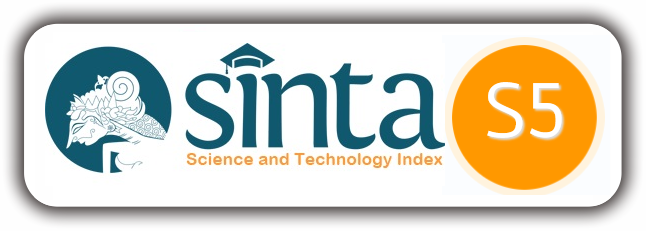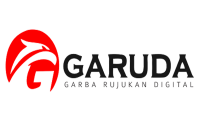Ekplorasi Pengaruh Levers Of Control terhadap Kinerja Kreatif pada Perusahaan Startup Indonesia: Studi Kasus pada Perusahaan Startup PT Bukalapak
Dyah Ayu Prawitowati(1), Mahfud Sholihin(2*)
(1) Fakultas Ekonomika dan Bisnis,Universitas Gadjah Mada, Yogyakarta
(2) Departemen Akuntansi,Universitas Gadjah Mada, Yogyakarta
(*) Corresponding Author
Abstract
Penelitian ini bertujuan untuk mendeskripsikan pengaruh Levers of Control (LoC) Simons dalam mendukung kinerja kreatif pada perusahaan startup di Indonesia. Rerangka LoC yang digagas oleh Simons (1995) digunakan dalam penelitian ini sebagai sebuah control package. Penggunaan teori komponen kreativitas dinamis pada penelitian ini sebagai landasan lingkungan kerja yang mampu mendorong pemberdayaan kreativitas personel. Penelitian ini menggunakan metode penelitian kualitatif dengan pendekatan studi kasus sebagai metode dalam mengeksplorasi secara mendalam untuk menjelaskan kompleksitas hubungan pengendalian dengan kinerja kreatif, serta mampu mendeskripsikan ketika terjadi kombinasi antarkeduanya. Data diperoleh melalui wawancara semiterstruktur pada personel perusahaan startup Bukalapak. Berdasarkan hasil penelitian ini diperoleh temuan yang menunjukkan bahwa model sistem pengendalian LoC membangun atmosfer kerja yang mendukung kinerja kreatif pada perusahaan startup. Hasil analisis menunjukkan bahwa perlu ada pemberdayaan sumber daya manusia yang tepat bagi startup dengan diberikannya kebebasan dalam mengekspresikan ide dan kreativitas, namun tetap berperannya sistem pengendalian, mampu menjaga keberlangsungan perusahaan.
Keywords
Full Text:
PDFReferences
Adi, M. P. H., & Sukmawati, A. (2020). The Effect of Levers of Control and Leadership Style on Creativity. Journal of Indonesian Economy and Business. https://doi.org/10.22146/jieb.55466
Adiwibowo, S., Setiadi, M. I., Daniel, Mitarum, E., Surbakti, E. E., & Shihab, M. R. (2019). Improving Indonesian Small Economies by Digitizing Traditional Shops: A Case Study of Mitra Bukalapak. Proceedings of 2019 International Conference on Information Management and Technology,ICIMTech 2019, August, 608–612. https://doi.org/10.1109/ICIMTech.2019.8843739
Alamsyah, A., & Utami, A. (2018). Social Network Performance Analysis and Content Engagement on Indonesia’s E-Commerce. 2018 6th International Conference on Information and CommunicationTechnology (ICoICT), 0(c), 464–469. https://doi.org/10.1109/ICoICT.2018.8528729
Albort-Morant, G., Leal-Millán, A., & Cepeda-Carrión, G. (2016). The antecedents of green innovation performance: A model of learning and capabilities. Journal of Business Research. https://doi.org/10.1016/j.jbusres.2016.04.052
Amabile, T. M., & Mueller, J. S. (2008). Studying creativity, its processes, and its antecedents: An exploration of the componential theory of creativity. In Handbook of Organizational Creativity.
Ansari, A., & Riasi, A. (2016). Modelling and evaluating customer loyalty using neural networks: Evidence from startup insurance companies. Future Business Journal. https://doi.org/10.1016/j.fbj.2016.04.001
Anthony, & Govindarajan, V. (2009). Sistem Pengendalian Manajemen Jilid 1. Jakarta: Salemba Empat.
Ashta, A., & Biot-Paquerot, G. (2018). FinTech evolution: Strategic value management issues in a fast changing industry. Strategic Change. https://doi.org/10.1002/jsc.2203
Avital, M., & Te’Eni, D. (2009). From generative fit to generative capacity: Exploring an emerging dimension of information systems design and task performance. Information Systems Journal. https://doi.org/10.1111/j.1365-2575.2007.00291.x
Bedford, D. S. (2015). Management control systems across different modes of innovation: Implications for firm performance. Management Accounting Research. https://doi.org/10.1016/j.mar.2015.04.003
Benedek, M., Jauk, E., Sommer, M., Arendasy, M., & Neubauer, A. C. (2014). Intelligence, creativity, and cognitive control: The common and differential involvement of executive functions in intelligence and creativity. Intelligence. https://doi.org/10.1016/j.intell.2014.05.007
Bhatnagar, B. (2007). Business Environment. Review of Professional Management- A Journal of New Delhi Institute of Management. https://doi.org/10.20968/rpm/2007/v5/i2/100984
Bisbe, J., & Malaguenõ, R. (2015). How control systems influence product innovation processes: Examining the role of entrepreneurial orientation. Accounting and Business Research. https://doi.org/10.1080/00014788.2015.1009870
Bouncken, R. B., & Reuschl, A. J. (2018). Coworking-spaces: how a phenomenon of the sharing economy builds a novel trend for the workplace and for entrepreneurship. In Review of Managerial Science. https://doi.org/10.1007/s11846-016-0215-y
Burritt, R., & Christ, K. (2016). Industry 4.0 and environmental accounting: a new revolution? Asian Journal of Sustainability and Social Responsibility. https://doi.org/10.1186/s41180-016-0007-y
Capnary, M. C., Rachmawati, R., & Agung, I. (2018). The influence of flexibility of work to loyalty and employee satisfaction mediated by work life balance to employees with millennial generation background in Indonesia startup companies. Business: Theory and Practice, 19, 217–227. https://doi.org/10.3846/btp.2018.22
Chen, C. X., Williamson, M. G., & Zhou, F. H. (2012). Reward system design and group creativity: An experimental investigation. Accounting Review. https://doi.org/10.2308/accr-50232
Chenhall, R. H. (2003). Management control systems design within its organizational context: Findings from contingency-based research and directions for the future. Accounting, Organizations and Society. https://doi.org/10.1016/S0361-3682(01)00027-7
Chenoweth, S. (2008). Undergraduate software engineering students in startup businesses. Software Engineering Education Conference, Proceedings. https://doi.org/10.1109/CSEET.2008.27
Creswell, J. W., & Creswell, J. D. (2018). Research Design: Qualitative, Quantitative, and Mixed Methods Approach. In Research in Social Science: Interdisciplinary Perspectives.
Davila, A., Foster, G., & Jia, N. (2015). The Valuation of Management Control Systems in Start-Up Companies: International Field-Based Evidence. European Accounting Review. https://doi.org/10.1080/09638180.2014.965720
De Stobbeleir, K. E. M., Ashford, S. J., & Buyens, D. (2011). Self-regulation of creativity at work: The role of feedback-seeking behavior in creative performance. Academy of Management Journal. https://doi.org/10.5465/AMJ.2011.64870144
Dul, J., Ceylan, C., & Jaspers, F. (2011). Knowledge workers’ creativity and the role of the physical work environment. Human Resource Management. https://doi.org/10.1002/hrm.20454
Effects of productivity goals, creativity goals, and personal discretion on individual creativity Christina E. Shalley, Journal of Applied Psychology (April 1991), pp. 179–185. (1991). Journal of Product Innovation Management. https://doi.org/10.1016/0737-6782(91)90065-7
Fauzan, M. A., Nisafani, A. S., & Wibisono, A. (2019). Seller reputation impact on sales performance in public e-marketplace bukalapak. Telkomnika (Telecommunication Computing Electronics and Control), 17(4), 1810–1817. https://doi.org/10.12928/TELKOMNIKA.V17I4.11780
Fraj, E., Matute, J., & Melero, I. (2015). Environmental strategies and organizational competitiveness in the hotel industry: The role of learning and innovation as determinants of environmental success. Tourism Management. https://doi.org/10.1016/j.tourman.2014.05.009
Girsang, M. J., Candiwan, Hendayani, R., & Ganesan, Y. (2020). Can Information Security, Privacy and Satisfaction Influence the E-Commerce Consumer Trust? 2020 8th International Conference on Information and Communication Technology, ICoICT 2020. https://doi.org/10.1109/ICoICT49345.2020.9166247
Gong, Y., Huang, J. C., & Farh, J. L. (2009). Employee learning orientation, transformational leadership, and employee creativity: The mediating role of employee creative self-efficacy. Academy of Management Journal. https://doi.org/10.5465/AMJ.2009.43670890
Gutnick, D., Walter, F., & Nijstad, B. A. (2012). Creative performance under pressure : An integrative conceptual framework. April. https://doi.org/10.1177/2041386612447626
Hadi, S. (2020). Tokopedia VS Bukalapak, Kelebihan dan Kekurangannya. Beritateknologi.Id, 534, 1–6. https://beritateknologi.id/tokopedia-vs-bukalapak-kelebihan-dan-kekurangannya/
Hart, M. A. (2012). The Lean Startup: How Today’s Entrepreneurs Use Continuous Innovation to Create Radically Successful Businesses Eric Ries. New York: Crown Business, 2011. 320 pages. US$26.00. Journal of Product Innovation Management. https://doi.org/10.1111/j.1540-5885.2012.00920_2.x
Hartog, L. M. (2015). User satisfaction in multi-tenant offices the relation between personality and demographic characteristics of users and their satisfaction with physical characteristics of multi-tenant offices. In Department of the Built Environment.
Henri, J. F., & Journeault, M. (2010). Eco-control: The influence of management control systems on environmental and economic performance. Accounting, Organizations and Society. https://doi.org/10.1016/j.aos.2009.02.001
Hirst, G., Van Knippenberg, D., Chen, C. H., & Sacramento, C. A. (2011). How does bureaucracy impact individual creativity? A cross-level investigation of team contextual influences on goal orientation-creativity relationships. Academy of Management Journal. https://doi.org/10.5465/AMJ.2011.61968124
Hu, N., Wu, J., & Gu, J. (2019). Cultural intelligence and employees’ creative performance: The moderating role of team conflict in interorganizational teams. Journal of Management and Organization, 25(1), 96–116. https://doi.org/10.1017/jmo.2016.64
Jack, L., Mundy, J., Jack, L., & Mundy, J. (2013). Routine and change: The role of management accounting and control. Journal of Accounting & Organizational Change. https://doi.org/10.1108/18325911311325924
Koseoglu, G., Liu, Y., & Shalley, C. E. (2017). Working with creative leaders: Exploring the relationship between supervisors’ and subordinates’ creativity. Leadership Quarterly. https://doi.org/10.1016/j.leaqua.2017.03.002
Li, H., Jin, H., & Chen, T. (2020). Linking Proactive Personality to Creative Performance: The Role of Job Crafting and High-Involvement Work Systems. Journal of Creative Behavior. https://doi.org/10.1002/jocb.355
Li, Y. (2014). Environmental innovation practices and performance: Moderating effect of resource commitment. Journal of Cleaner Production, 66, 450–458. https://doi.org/10.1016/j.jclepro.2013.11.044
Lin, Y. H., Chen, C. J., & Lin, B. W. (2017). The influence of strategic control and operational control on new venture performance. Management Decision. https://doi.org/10.1108/MD-07-2015-0324
Lorenzen, M. (2019). Creativity in context. In Creativity, Innovation and the Cultural Economy. https://doi.org/10.4324/9780203880012-4a
Madjar, N., & Ortiz-Walters, R. (2008). Customers as contributors and reliable evaluators of creativity in the service industry. Journal of Organizational Behavior. https://doi.org/10.1002/job.522
Malau, D. N., Setiawan, A. D., & Hidayatno, A. (2020). Model Conceptualization on Startup Company Development and Valuation in Indonesia. 2020 IEEE 7th International Conference on Industrial Engineering and Applications, ICIEA 2020, 298–302. https://doi.org/10.1109/ICIEA49774.2020.9102089
Mas-Verdú, F., Ribeiro-Soriano, D., & Roig-Tierno, N. (2015). Firm survival: The role of incubators and business characteristics. Journal of Business Research. https://doi.org/10.1016/j.jbusres.2014.11.030
Molina-Azorín, J. F., Claver-Cortés, E., Pereira-Moliner, J., & Tarí, J. J. (2009). Environmental practices and firm performance: an empirical analysis in the Spanish hotel industry. Journal of Cleaner Production. https://doi.org/10.1016/j.jclepro.2008.09.001
Moulang, C. (2015). Performance measurement system use in generating psychological empowerment and individual creativity. Accounting and Finance. https://doi.org/10.1111/acfi.12059
Mulyadi. (2001). edisi 3. Akuntansi manajemen, Konsep, Manfaat, dan Rekayasa. In Universitas Gadjah Mada.
Oldham, G. R., & Cummings, A. (1996). Employee creativity: Personal and contextual factors at work. Academy of Management Journal, 39(3), 607–634. https://doi.org/10.2307/256657
Ortt, J. R., & Van Der Duin, P. A. (2008). The evolution of innovation management towards contextual innovation. European Journal of Innovation Management, 11(4), 522–538. https://doi.org/10.1108/14601060810911147
Perrmann, J., Christensen-Salem, A., & Masterson, S. S. (2020). We’re in This Together: The Antecedents and Consequences of Creative Effort in Dyads. Academy of Management Proceedings. https://doi.org/10.5465/ambpp.2020.16917abstract
Rese, A., Kopplin, C. S., & Nielebock, C. (2020). Factors influencing members’ knowledge sharing and creative performance in coworking spaces. Journal of Knowledge Management, 24(9), 2327–2354. https://doi.org/10.1108/JKM-04-2020-0243
Shalley, C. E., Zhou, J., & Oldham, G. R. (2004). The effects of personal and contextual characteristics on creativity: Where should we go from here? Journal of Management. https://doi.org/10.1016/j.jm.2004.06.007
Shalley, C., Gilson, L., & Blum, T. (2009). Interactive effects of growth need strength, work context, and job complexity on self-reported creative performance. Academy of Management Journal. https://doi.org/10.5465/AMJ.2009.41330806
Shin, S. J., & Zhou, J. (2003). Transformational leadership, conservation, and creativity: Evidence from Korea. Academy of Management Journal. https://doi.org/10.2307/30040662
Suroso, J. S., & Sriratnasari, S. R. (2019). A Literature Review on the Challenges of Adopting Cloud Computing for Startup in Indonesia. 1st 2018 Indonesian Association for Pattern Recognition International Conference, INAPR 2018 - Proceedings, 315–321. https://doi.org/10.1109/INAPR.2018.8627052
Tessier, S., & Otley, D. (2012). A conceptual development of Simons’ Levers of Control framework. Management Accounting Research. https://doi.org/10.1016/j.mar.2012.04.003
Tierney, P. (2008). Leadership and employee creativity. In Handbook of Organizational Creativity.
Tierney, P., & Farmer, S. M. (2011). Creative Self-Efficacy Development and Creative Performance Over Time. Journal of Applied Psychology. https://doi.org/10.1037/a0020952
Van Dyne, L., & LePine, J. A. (1998). Predicting Voice Behavior in Work Groups. Journal of Applied Psychology.
Wagner, M. (2015). The link of environmental and economic performance: Drivers and limitations of sustainability integration. Journal of Business Research. https://doi.org/10.1016/j.jbusres.2014.11.051
Wijethilake, C. (2017). Proactive sustainability strategy and corporate sustainability performance: The mediating effect of sustainability control systems. Journal of Environmental Management. https://doi.org/10.1016/j.jenvman.2017.03.057
Woodman, R. W., Sawyer, J. E., & Griffin, R. W. (1993). Toward a Theory of Organizational Creativity. Academy of Management Review. https://doi.org/10.5465/amr.1993.3997517
Za, S. Z., & Mulawarman, U. (2016). Analysis of People’s Interests in Using E-Commerce Service from Tokopedia and Bukalapak based on the Quality of the Service, Design, and the Popularity of the Websites. European Journal of Economic Studies, 6(1). https://doi.org/10.13187/es.2017.6.66
Zhou, L., Teng, L., & Poon, P. S. (2008). Susceptibility to global consumer culture: A three-dimensional scale. Psychology and Marketing. https://doi.org/10.1002/mar.20212
Zou, L., Ke, W., Zhang, J., & Wei, K. K. (2014). User creativity in crowdsourcing community: From extrinsic motivation perspective. Proceedings - Pacific Asia Conference on Information Systems, PACIS 2014.
ZZrgiebel, S. J. (2016). The Rise of the Unicorns - How Media Affects Start-Up Valuations. SSRN Electronic Journal. https://doi.org/10.2139/ssrn.2808458
Article Metrics
Refbacks
- There are currently no refbacks.
This work is licensed under a Creative Commons Attribution 4.0 International License.
______________________________________________________________________________________________________
2302 - 1500


_logo2.png)





